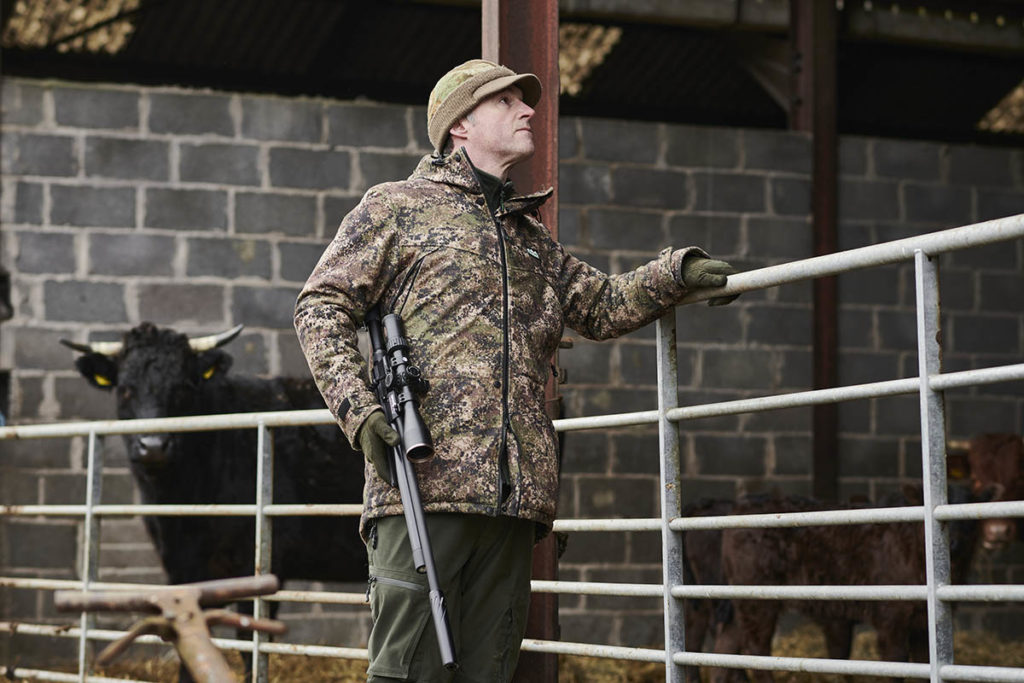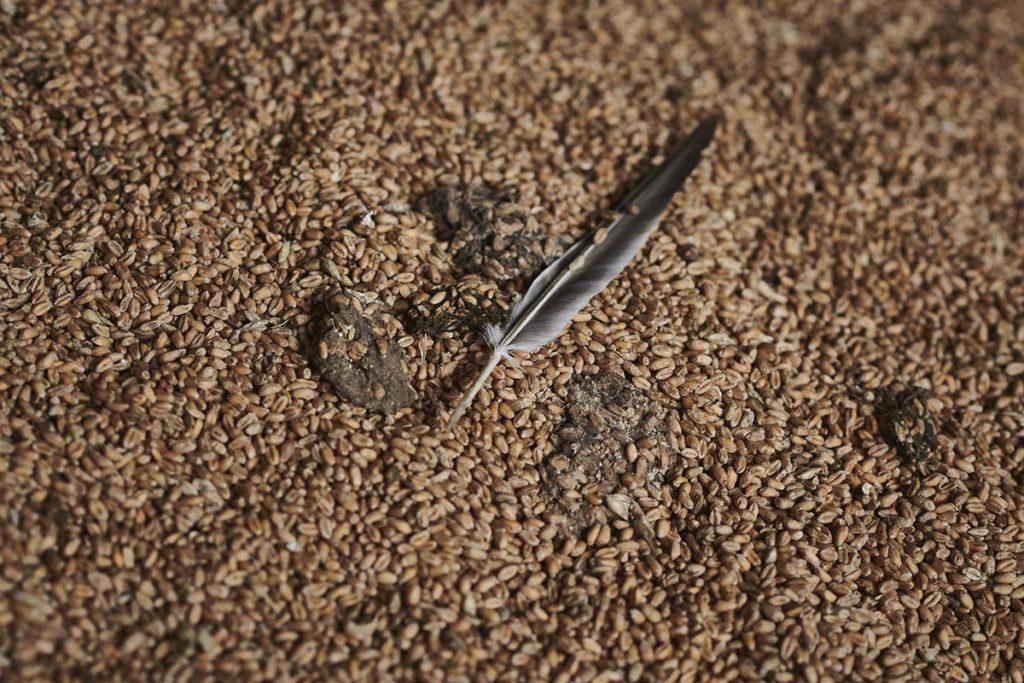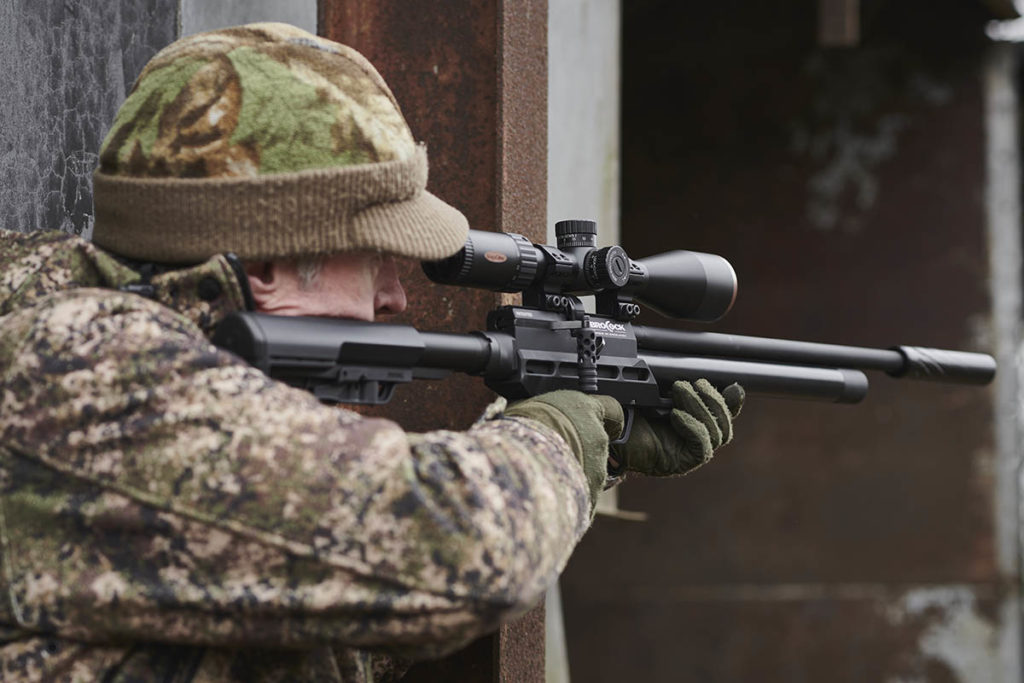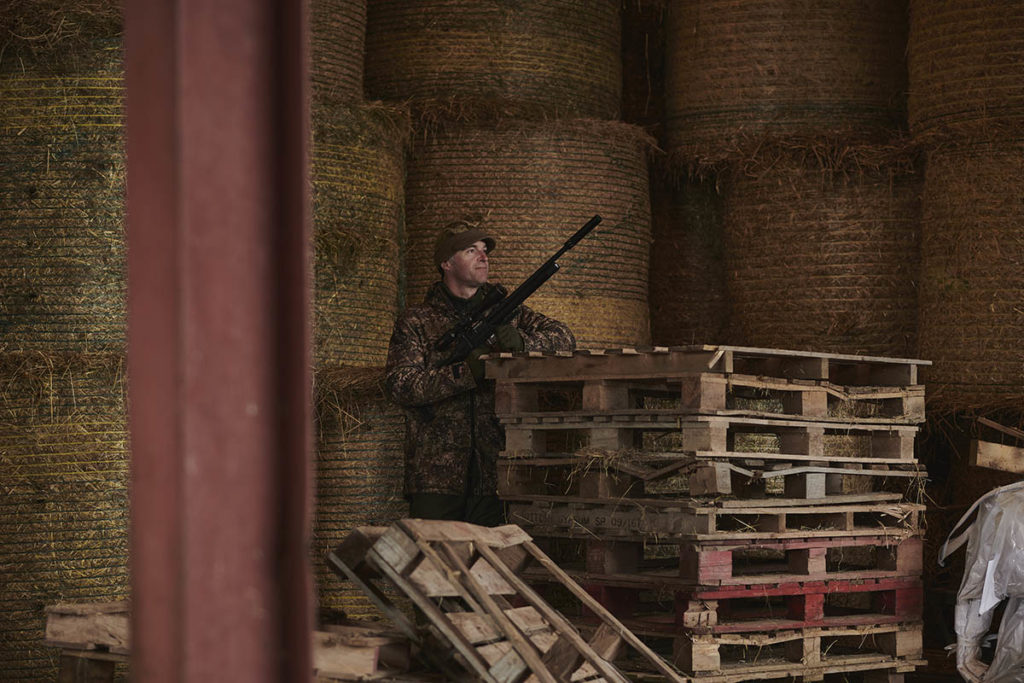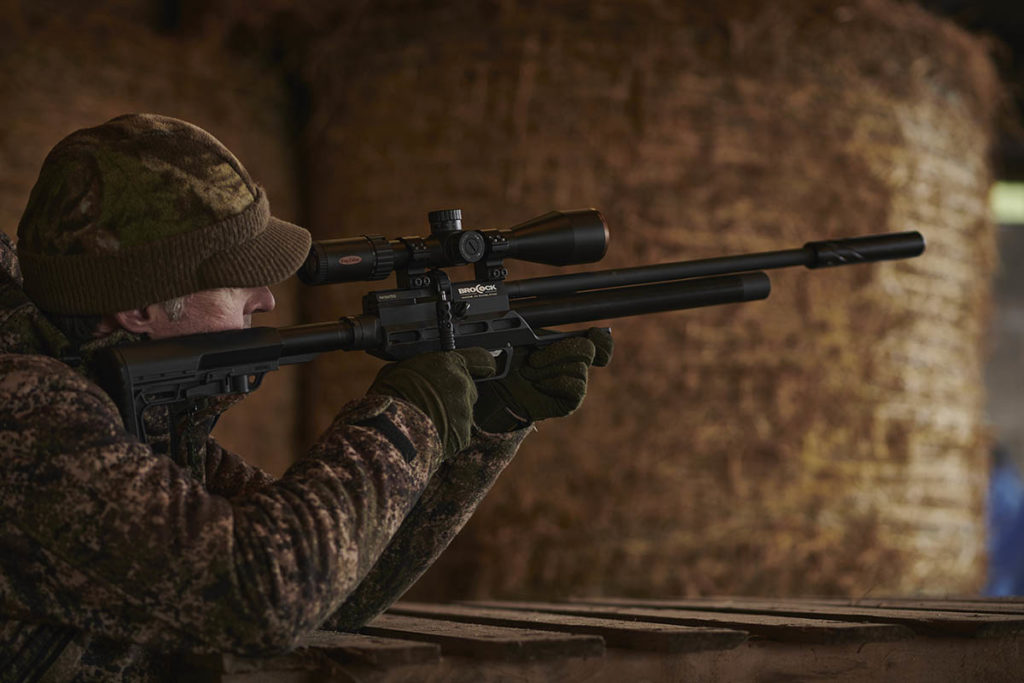Feral pigeon control – The Countryman with Mat Manning
For the latest entry in Airgun Shooter's Countryman series, Mat Manning sets out on a feral pigeon control mission, as they pose a health hazard to livestock and workers
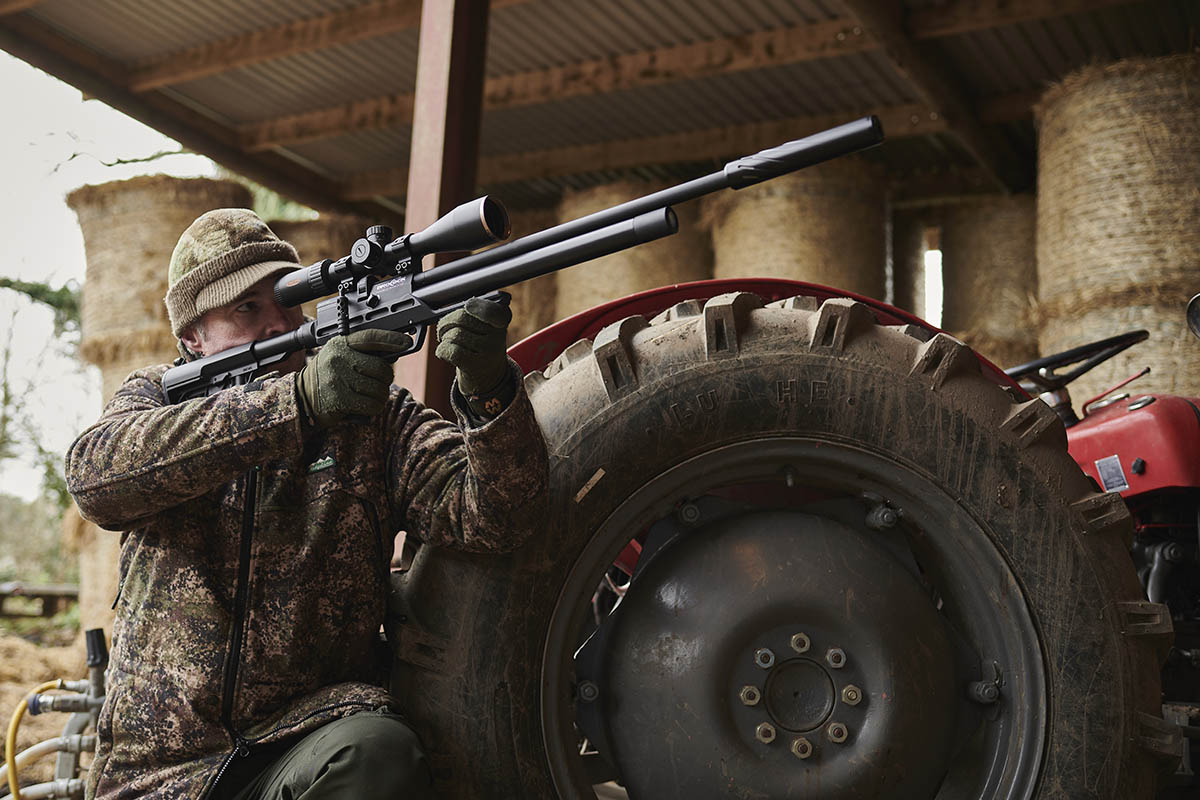
Feral pigeon control is a problem for many farmers. These birds love to nest up in the rafters of large barns, especially as there is usually an easy food supply nearby. This prime habitat makes for very comfortable living, and it doesn’t take long for populations to get out of hand.
The farm I am targeting today is a mixed holding where avian pests have been attracted by animal feed and stored grain. Apart from eating valuable feed and produce, the birds are posing an even more serious problem through the disease risk from their droppings.
Feral pigeons have the potential to breed all year round with population spikes often occurring in the spring.
Their numbers usually remain quite low on this farm as a result of my regular visits, but with the days growing longer and the weather gradually improving their nesting activities are beginning to gather momentum. My intention today is to nip the problem in the bud before it escalates.
Feral pigeon control doesn’t usually demand specialist gear or tactics. These birds are accustomed to the noise and disturbance of livestock, and the comings and goings of farm workers and machinery, so they tend to be quite bold as a result. Shooting is usually done at fairly close quarters, although feral pigeons can become wary after a few losses from their flock. (Sometimes air rifles are the best option for close quarters pest control, as Mat Manning details here in how to use an air rifle for pest control).
There is also the chance of encountering the odd carrion crow on this holding. With lambing season underway, these sharp-eyed birds need to be kept in check, but getting past their defences will probably prove much harder than bagging ferals.
I have no rigid plan in place for this shoot. My approach will depend entirely on what I find when I recce the farm and how the birds react to my presence. (Read more on farmyard feral pigeon control with air rifles here).
The quarry: feral pigeon
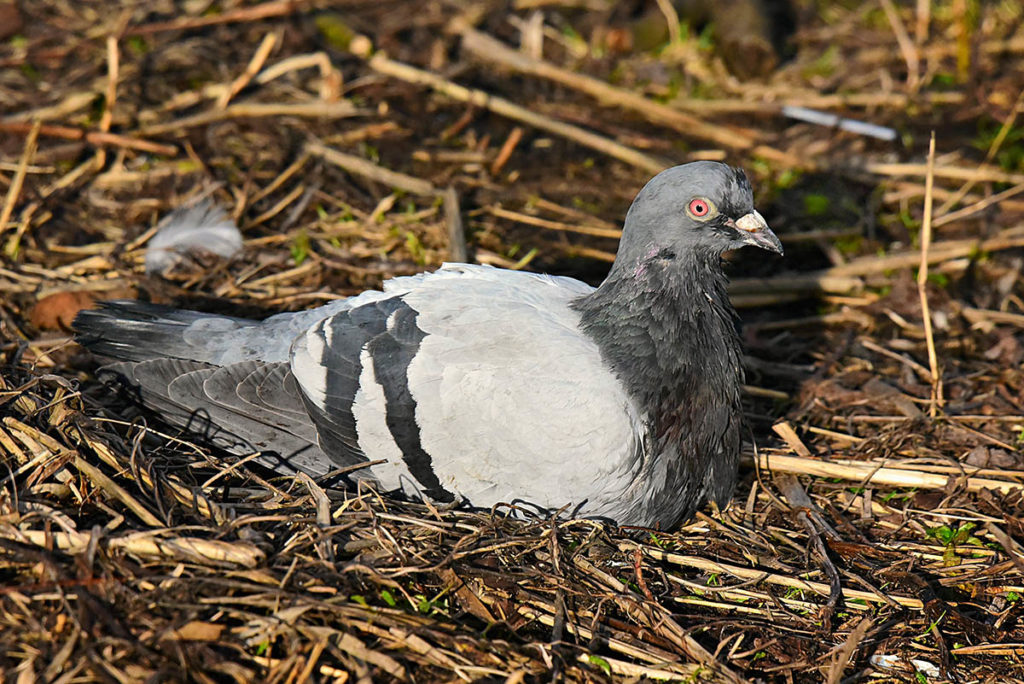
PEST STATUS: These birds cause serious problems, not only by stealing grain and animal feed around the farm, but also by contaminating feed, water troughs and stored produce with their droppings.
ADDITIONAL INFORMATION: Descended from the wild rock dove, which cannot be shot, feral pigeons are fast-breeding birds that have colonised car parks, train stations, warehouses and farm buildings. They come in a variety of colours from blue and grey to pure white.
11:10 – reconnaissance rounds
Farmyards are fraught with hazards so it is always a good idea to have a good look round before you start shooting. One of the key things to check is shooting angles to make sure all shots will be taken in a safe direction and well away from workers, livestock and machinery.
You also need to be mindful of your own safety, as things like cattle and vehicles can pose a serious danger if you find yourself in the wrong place at the wrong time.
Mat has chosen to visit during the quiet part of the day when most of the farm workers are out on the fields. He has also sent a text to the farm manager, so the workforce know that he will be around.
Although the main purpose of Mat’s first walkaround is to get the lie of the land and work out which areas to focus on, he does have his airgun with him. If he encounters any feral pigeons during his stroll he will take them, but only if they offer safe shots.
It is a fortunate coincidence that barns that hold feral pigeons are often made of concrete and steel – materials that act as a good backstop for pellets.
The same cannot be said for roof panels though, so Mat will not take any shots that carry the risk of causing a leaky roof.
11:20 – clear signs
When choosing where to target flying farmyard pests, keep your eyes on the ground as well as the sky. Although actual sightings of birds will give you a good clue of where they are gathering, they can also leave plenty of evidence on the deck.
As Mat makes his way around the farm, he pauses for a closer look in a barn that is used to store animal feed. There are no birds around right now but their feathers and droppings confirm that they have been here. The pigeons’ excrement is also splattered over machinery and feed troughs, where it could pose a serious risk to farm workers and livestock.
The roof of this barn is crisscrossed with steel joists that are also caked in white droppings. This is clearly a place where the birds like to congregate.
And it isn’t just pest birds that appear to have been feasting around these buildings. The heaps of grain are also speckled with rat droppings left behind after the rodents’ night-time raids.
Burrows spotted on a nearby bank suggest that the rats are getting too comfortable here. It is unlikely that Mat will see the culprits by daylight, but he knows where he will be heading when he returns for a visit with his night vision gear. (Read more about the best thermal imagers here, or more about essential airgun kit here).
11:25 – one on the move
Rather than trying to creep around very stealthily, it is usually best to focus on reconnaissance rather than keeping concealed when checking out the farm. This doesn’t mean you won’t get shots though, as feral pigeons will sometimes make the mistake of thinking that you pose no more danger than a farm worker as you make your way around the buildings.
As Mat rounds a barn he encounters a single feral pigeon perched on a ledge on the outside of the wall of a cattle shed. With nothing but concrete behind the bird, this is a safe shot for Mat’s sub-12ft/lb Brocock Concept XR.
Leaning into the shed for support, Mat lines up on the feral, which is only about 20m away. Tackling a target at such close range makes for a relatively straightforward shot. The crosshairs come to rest on the bird’s head and Mat squeezes through the trigger to drop it with a solid smack to the skull.
Bagging one on the move makes for a great start to the session but Mat reckons his time would be better spent focusing on one of the areas where the birds appear to be most active. He gathers up the shot feral pigeon and continues in search of a promising ambush point.
Feral pigeon control expert tip – go the right way
Although feral pigeons aren’t usually particularly flighty on busy farms there is a very simple way to improve your chances of getting close to wary avian pests when making your way around the farmyard, and that is to travel in the right direction.
By walking around the outside of buildings in an anticlockwise direction, right-handed shooters will have the arm they use to shoulder their airgun on the outside as they look around.
This means you don’t have to expose so much of your outline when you line up for a shot and can help to keep you from being spotted if you come across unsuspecting birds.
Left-handers simply need to walk around the outside of buildings in a clockwise direction.
11:35 – in for an ambush
Apart from creating ideal nesting sites for feral pigeons, farm buildings can also provide handy hiding places for airgun shooters.
Sacks, machinery and haybales can be used for cover, and never underestimate how effective shade is when it comes to keeping concealed.
Mat settles for a spot towards the back of a large barn. Standing behind a stack of pallets, most of his body is hidden from prying eyes and a tall heap of haybales creates a solid backdrop to mask his silhouette. This hiding place should be more than sufficient to keep Mat concealed from feral pigeons and may just be good enough for him to catch one or two crows unawares.
Apart from keeping Mat out of sight, his chosen spot also offers him a good variety of shooting angles. He expects birds to flight into some tall bushes in front of a barn before they flutter down to feed.
The large barn’s concrete wall will serve as a very effective pellet-stopper for shots at birds that settle in the trees and will also serve the same purpose if any land straight on ground and start scratching around for morsels of food.
11:50 – picking off pigeons
Mat’s decision to play the waiting game rather than chasing birds around the farm seems to have been a good move.
The abundance of droppings beneath the trees in front of the barn suggested that this place could be a popular perch for feral pigeons to survey the farmyard before dropping down to feed, and that is confirmed when a pair of birds swoop into the branches after Mat settled in.
One of the birds is obscured by branches, but the other is in clear view. About 20 feet off the ground and with the barn wall creating a safe stop behind, this shot is certainly on.
As Mat lines up for the shot, the bird shuffles along the branch and its head becomes obscured by twigs. A heart and lung shot is still on; the feral pigeon has its back to Mat, so a solid strike between the shoulders will offer the pellet a relatively clear path to its vitals.
At around 25m and in very still conditions, this is not a particularly difficult shot, but Mat is still glad to have the support of the pallets.
The added stability here makes for a rock-steady shot which concludes with another cleanly killed bird in the bag, which is swiftly followed by another.
12:45 – retrieve and move on
Tucked in the shadows of the barn, Mat continues to snipe feral pigeons from his hiding place. With birds flighting quite frequently, he is treated to a steady stream of shots and manages to account for five birds in just over an hour.
During his stakeout, a couple of crows are drawn in by the sight of the dead birds out in the yard, but both spook and jink away before landing. Mat doesn’t think the suspicious corvids spotted him but they obviously didn’t like something about what they saw.
Mat’s standing position in the barn doesn’t make for a particularly comfortable stakeout so he soon decides to move on and try a different spot when the action begins to slow down. He earmarked another area during his recce so that will be his next port of call.
Apart from offering a better chance at the crows, the next area will enable Mat to keep an eye on the bank where the rats are nesting. It is unlikely he will see them during daylight, but there is always a chance.
Before moving on, Mat retrieves the shot feral pigeons and disposes of them on the farm’s fire site. Although woodpigeons make for very fine eating, feral pigeons do not – these birds often carry diseases which means they are not fit for the table.
Feral pigeon control – Mat’s gear
GUN: Brocock Concept (XRbrocock.co.uk)
OPTICS: MTC King Cobra (F2mtcoptics.com)
SCOPE MOUNTS: Sportsmatch (two-piecesportsmatch-uk.com)
AMMO: Rangemaster Sovereign (daystate.com)
JACKET: Ridgeline Grizzly III Jacket (ridgelineclothing.co.uk)
GLOVES: Macwet Micromesh Long Cuff (versionrange-right.co.uk)

